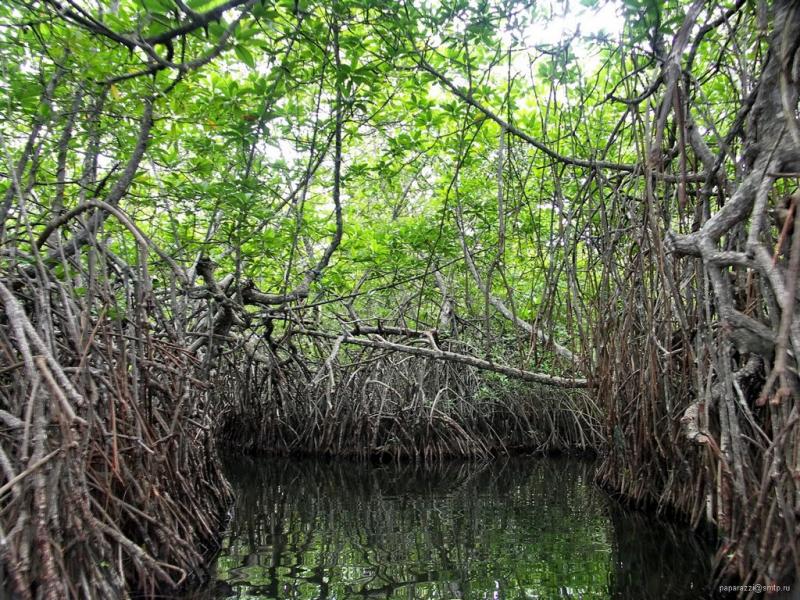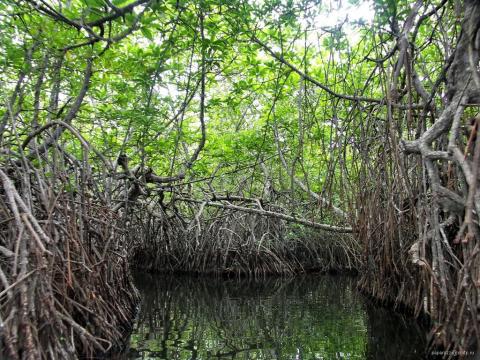Mangroves
A mangrove is a swampy area found in the costal areas and at river mouths. They are periodically inundated by sea water. Rich mangrove forests exist in the Puttlam and Kalpitiya areas, and Portugal and Dutch bays. Dense strips of mangroves also occur in the southwest and southern coasts. The total mangrove area in the island is estimated between 6,000 -13,000 ha. Fourteen mangroves species and 12 associated species have been recorded. Mangrove trees have many adaptations to survive in water logged, saline soil with very little areartion. Stilt and prop roots for support, pneumatopores, which are roots for breathing air and which stick out of the water to take in air, salt and to relieve excess salt are such adaptations. There are many types of fauna of which some are adapted to this specific environment. Mud skipper; a fish who enjoys a walk, the Fiddler crab with one big claw, are some. Some mangrove trees exhibit viviparity; that is the seed germinates while attached to the mother plant. This longer period of development before release, ensures the survival of the plant.

Maduganga Mangrove
Mangroves are essential for nutrient retention for certain species of fish and shrimp to breed. However mangroves are being destroyed for the expansion of human settlement and for aquaculture. Poles, firewood, twigs for brush piles etc. are extracted from mangroves. Pollution and siltation affects the quality of the trees Thus we find that the mangroves are fragmented exploited and degraded.

